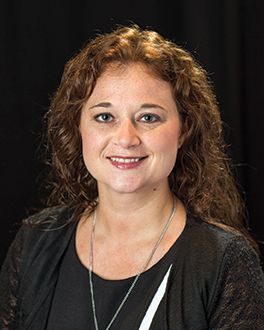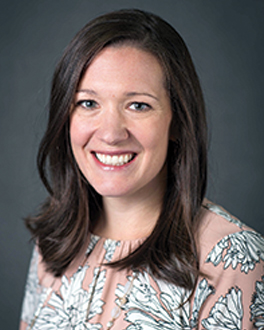 As we’ve learned these past two years, infection prevention and control training and education aren’t one and done. The knowledge and clinical evidence are evolving, staff turns over, and new misinformation pops up and spreads via social media and other sources. Working with the Centers for Disease Control and Prevention’s (CDC) Project Firstline, AHCA/NCAL will help lead a ripple effect with training that will provide engaging, innovative, and effective infection control training for frontline workers and others.
As we’ve learned these past two years, infection prevention and control training and education aren’t one and done. The knowledge and clinical evidence are evolving, staff turns over, and new misinformation pops up and spreads via social media and other sources. Working with the Centers for Disease Control and Prevention’s (CDC) Project Firstline, AHCA/NCAL will help lead a ripple effect with training that will provide engaging, innovative, and effective infection control training for frontline workers and others.
“The overarching goal is to improve infection prevention and control practices in long term care using an umbrella approach and an understanding that everyone plays a key role,” said Pamela Truscott, Director of Clinical and Regulatory Services at AHCA/NCAL.
Evolution of New Training Approach
Project Firstline is a collaboration of diverse health care and public health organizations. It involves extensive content usable for a variety of audiences, regardless of their previous training or education background. The materials, information, and resources aim to help them understand and confidently apply infection control principles and protocols necessary to protect themselves, their facility, their family, and their community from infectious disease threats including COVID-19.
CDC put out a call for proposals last year for all entities and settings to apply. AHCA/NCAL received an initial grant to conduct a social media campaign promoting COVID vaccination as part of its Vaccinate with Confidence program. That led to the organization’s involvement in these educational/training efforts.
AHCA/NCAL’s agreement with the CDC goes from October of last year through September of this year. “We will embark on three separate aspects,” said Truscott. “The first is aimed at educating residents and their families. The second is designed to engage and empower staff closest to the work in infection prevention and control efforts. The third involves implementation of an innovative approach using shift coaches to provide a “see something, say something” philosophy. This will provide just-in-time feedback to ensure staff are doing infection prevention and control the right way every time.”
“The training will be multimedia in nature, with some reading materials but also innovative videos, Power Point presentations with voiceover, and other offerings. Instead of a traditional toolkit, this will be presented in “bite size” modules,” said David Gifford, MD, MPH, AHCA Director of the Center for Health Policy Evaluation in LTC and AHCA Chief Medical Officer, “and adapted according to users’ needs.”
In the upcoming months, all the training will be available on the ahcancaled platform and available to everyone, not just AHCA/NCAL members. There will be programming for leadership, middle management, frontline staff, residents, families, visitors, and others. “We want to involve everyone because they’re all part of the solution,” said Truscott.
The Why, The How, and More
The efforts to engage and empower staff are unique in that they help teams understand the ‘why’ behind infection prevention and control efforts. Truscott explained, “For instance, people know that they have to wash their hands, but they don’t necessarily know all aspects of the ‘why.’ When we help them understand that, the ‘how’ and ‘what’ become more efficient.”
Gifford added, “There is a fair amount of data showing that peer monitoring for [tasks such as] handwashing prior to COVID was an effective strategy to increase rates. The challenge with COVID is that you have to engage in practices consistently; it’s not enough to do it 80-85% of the time.” He further noted, “Data also suggest that people forget and need reminders.” Gifford worked with Brown University on a pilot program about peer coaching, and AHCA/NCAL took the lessons learned in that and incorporated them into this curriculum.
Taking Information from Cloudy to Clear
The program will do more than just educate, train, and inform. It will enlighten. This means clearing up some misunderstandings and misconceptions. As Gifford explained, “We are taught since childhood that when you are sick, you spread germs, but many people don’t realize they can also spread illness when they’re healthy.” He added that there “also is a misperception that you wear masks to protect yourself from getting sick, but it actually protects other people and prevents the spread of droplets.” The same is true of other PPE. “If it was just to protect you, you wouldn’t need to change between residents,” said Gifford.
Truscott noted that misconceptions aren’t necessarily limited to non-licensed and non-certified staff, so this training is important for everyone. She added, “There is some logical confusion out there—‘If you have to do this here, why not everywhere?’” She explained that this is partly due to inconsistencies in the guidance as information and knowledge have evolved and changed over time.
Vaccinate with Confidence
Prior to Project Firstline, AHCA/NCAL received a grant to work on Vaccinate with Confidence, CDC’s strategic framework to strengthen vaccine confidence and prevent outbreaks of vaccine-preventable diseases, including but not limited to COVID. The grant included funding to build an educational course to help providers impact vaccine rates.
 There has been a breakdown in trust throughout the pandemic, and this has been one factor affecting vaccine rates. Courtney Bishnoi, AHCA/NCAL Vice President of Quality and Programs, said, “We are trying to get at the root cause of where we see a lack of trust.” For instance, at the height of the pandemic, there often was a shortage of PPE. At the same time, guidance from CDC and other expert sources changed rapidly, leading some staff to question what they were being told from one day to the next.
There has been a breakdown in trust throughout the pandemic, and this has been one factor affecting vaccine rates. Courtney Bishnoi, AHCA/NCAL Vice President of Quality and Programs, said, “We are trying to get at the root cause of where we see a lack of trust.” For instance, at the height of the pandemic, there often was a shortage of PPE. At the same time, guidance from CDC and other expert sources changed rapidly, leading some staff to question what they were being told from one day to the next.
“Misinformation is a huge problem,” Bishnoi said, adding “This is frustrating and hard to tackle. But if you have a high level of trust for your employer, you are more likely to seriously consider what they are telling you. We are trying to teach people to communicate differently.”
Bishnoi said, “We are trying to build a course that leaders can use to build trust, then have those often-difficult conversations around vaccinations and boosters. We hope that this will help nursing homes improve vaccination rates as well as the culture that contributes to residents’ lives and safety.”
Ultimately, Bishnoi stressed, “There is nothing else like this for long term care. It focuses less on the vaccines and more on why we can’t have conversations about them. We are trying to take a step back and address why people are having trouble with these conversations.” Then, she said, “We will give them the tools to have the conversation in a compassionate, empathetic way.”
There will be tremendous support for facility teams at all levels. For instance, there will be a train-the-trainer program and opportunities for people to share their successes and challenges.